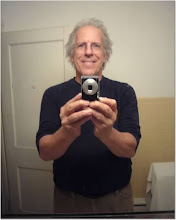Today in 1869, Rachel
Davis Harris, American librarian and activist and the director and children's
librarian of the Louisville Free Public Library, Western Colored Branch (above)
one of the first segregated libraries built in the southern United States, is
born. I got this from a site called Literary Hub which sends me a half dozen items or more a day by email.
Here's the wikipedia entry on Ms. Harris:
Here's the wikipedia entry on Ms. Harris:
Born in Louisville, Kentucky,
Rachel Davis was the daughter of Susan Davis (later Susan Johnson). She was a
graduate of Central High School in 1885. In Louisville, the illiteracy rate for
blacks was very high in comparison to whites: 18.7% for blacks, 1.7% for whites.[2] With a high school
degree, Harris became a member of the upper echelon of the black Louisville
community. Upon graduating, she began her career as a teacher from 1885 to
1903. During this time, Davis married the Rev. E.G. Harris, pastor of the black
Plymouth Congregational Church, and they had one son[3]
The Louisville
Free Public Library opened the Western Colored Branch as a result of
investment made by Carnegie funds.
Alongside her mentor, Thomas Fountain Blue, Harris was hired as assistant
librarian of the branch in 1905.[4] Blue's passion for
providing library services to the local black community influenced Harris to
also push for more outreach, as well. The two librarians were Louisville's
first black public librarians, acting as pioneers in creating a new municipal
service for the black community in Louisville. Both were avid leaders in
southern librarianship, actively writing and publishing articles locally and
nationally.
Working
at the Colored Branch in Louisville, Harris gravitated toward working with
youths in outreach programs. She established story times on a weekly basis,
boys' and girls' clubs, and school visits to promote the library to school
children. Harris also worked with school faculty in Louisville to develop
classroom book collections that supported the curriculum being taught, culling
on her years working as a teacher. Her early years taught her the importance of
the availability of having access to reading material outside the classroom
that was both entertaining and educational along with the need for classroom
collections of books.
In
five years, Harris' outreach project was deemed a success. Harris' efforts had
increased book circulations from 18,000 to 55,000 in her five-year tenure,
allowing her to conclude:
When we look back now at the
time of our beginning we see that our fears were unfounded. Our people only
needed an opportunity and encouragement. The success of the branch has exceeded
the hope of the most sanguine of those interested in its organization, and we
feel justly proud of those results attained.[5]
Harris'
prominence in the African American community continued to rise throughout her
years working at the Colored Branch. In September 1913, she was named senior
assistant in charge of the newly opened Eastern Colored Branch, constructed
with Carnegie funds. Alongside Blue, Harris began conducting an apprenticeship
training program for individuals interested in working in libraries around the
state. Many of the apprentices went on to work at the Western and Eastern
Colored Branches. By 1924, 37 local black women had participated and received
training from Harris and Blue. The program's success continued to reaffirm
Harris' status in the Louisville African American and library communities.
Her
fame allowed her to open new branches for African Americans in Roanoke, Virginia and Georgetown, Kentucky.[6] Harris continued to work
with schools to expand collections and services in Louisville and Jefferson
County. By 1923, 58 classroom collections had been established in 30 school
buildings with Harris' influence.
Harris
had a lasting impact on children's librarianship in Louisville and across the
South. Her encouragement in the Western Branch to increase youth services
marked her as one of the so-called "matriarchal profession" of
librarians that introduced youths to folklore, fairy tales, and stories.[7] Harris also followed in
the pattern of the librarian as an educated, middle-class woman that served her
community via encouraging development by focusing on the needs of children and
their education. In this way, Harris assisted in the Civil Rights Movement that
spread across the nation.[8]



No comments:
Post a Comment